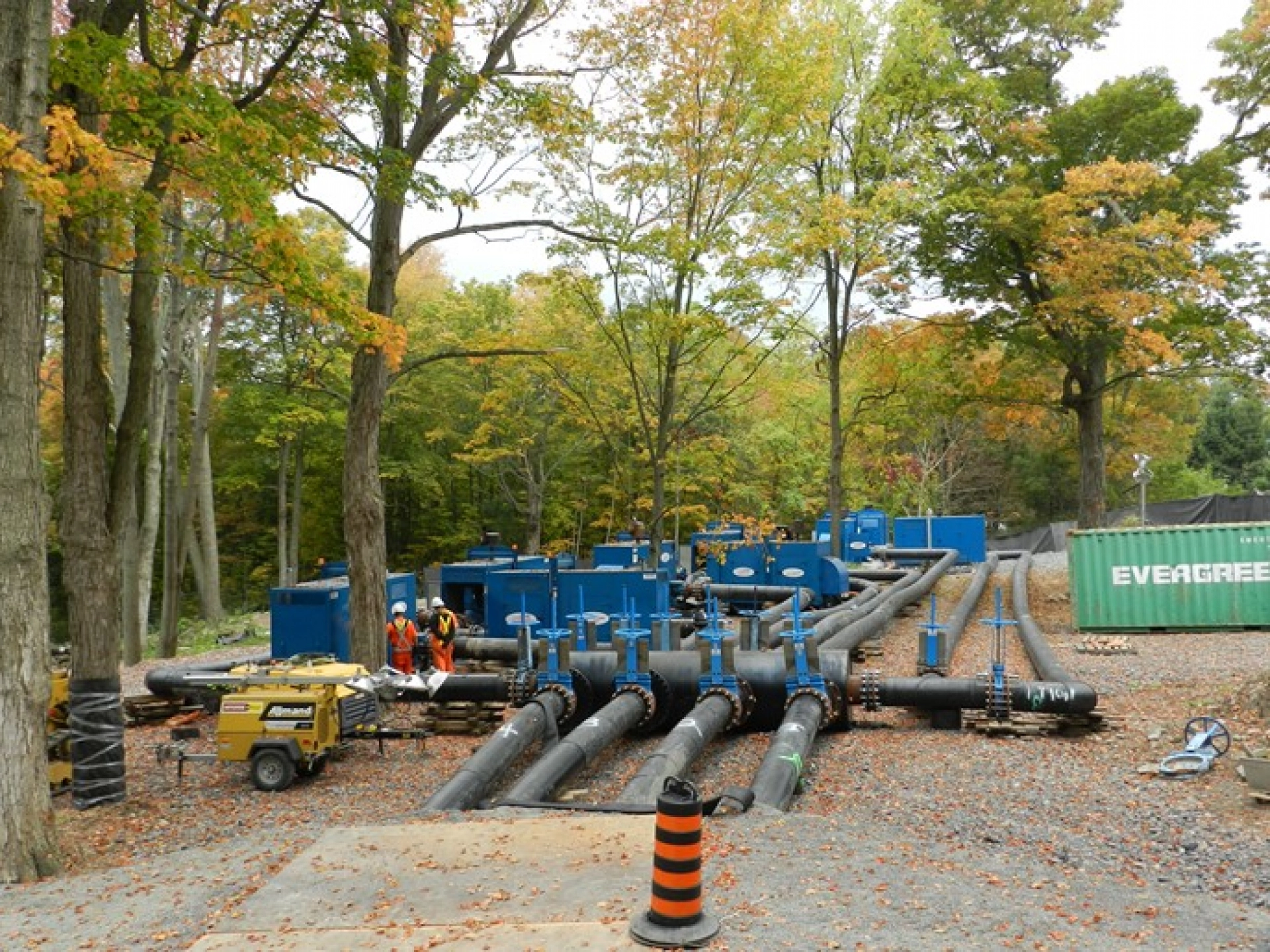Project Description
Robinson Consultants Inc. was retained by Kingston Utilities to assist in the planning, design, tendering, contact administration, and site inspection of the Ravensview Trunk Sewer (RTS) and North End Outlet (NEO) sanitary sewer rehabilitation project. The RTS/NEO rehabilitation project consisted of several phases completed over a 5-year period. The RTS and NEO are two major trunk sewers situated within the City of Kingston ranging in diameters sizes of 750mm to 1350mm with total combined length of 6km. The NEO runs predominately off road through wood areas and parks, and the RTS runs through wood areas in close proximity to Lake Ontario, behind some large private properties and through the Canadian Forces Base (CFB) Kingston and out letting to the Ravensview Wastewater Treatment Plant (WWTP).
The RTS and NEO were identified as having moderate to severe H2S corrosion deterioration throughout their lengths, including exposed rebar. Project activities included sewer condition assessment, trenchless rehabilitation methodology recommendations, establishing priorities areas for rehabilitation, physical condition investigations (core sampling, H2S corrosion assessment), geotechnical investigations, failure risk analysis, emergency responses plan, flow by-pass planning for 2350 L/s flows (RTS) & 770 L/s, preparing cost estimates and schedules, significant stakeholder meetings including Department of National Defense, preparing technical specifications, bid forms and price schedule, development of contractor RFP (including evaluation criteria), evaluation of RFP responses, technical QA/QC review of CIPP liner sampling and training seminars.
Condition assessment included recommendation on priority work for phasing of the rehabilitation work over 5 years to maximize the available capital funding per calendar year while mitigating risk. A key consideration in design and specification included flow control/bypass requirements made challenging by high flow rate forcemains incoming directly into the sewer at the rehabilitation.
RTS required a 2350 l/s fully operational flow by-pass system to be set-up and in operation for duration of project. This was accomplished through the innovative design and construction of a temporary wet well to capture and by-pass pump the flows.
Potential rehabilitation methods were analyzed resulting in selecting CIPP lining due to availability of several contractors to perform the work along with the installation method being best suited to the pipe and site conditions along with capacity requirements.
Contract administration and inspection services for the CIPP lining of this major trunk sanitary sewer included major bypass pumping, emergency preparedness, and coordination with multiple landowners including CFB Kingston.
This critical piece of Kingston infrastructure was built in the 1950s and conveys 60%-70% of Kingston sewer flow including downtown and east end. The project limits started at Hwy 2 and Hwy 15 and ran through CFB Kingston, Cartwright Point, and La Salle Blvd and outlets at the Ravensview Treatment Plant.
The 3.4km of 1200mm and 1350mm pipe was rehabilitated. The main key to success with a project as complicated and involved as this was a team-based approach involving all stakeholders, which resulted in an effective approach to maintaining construction schedule and pre-empting issues that would cause delays and conflicts.



